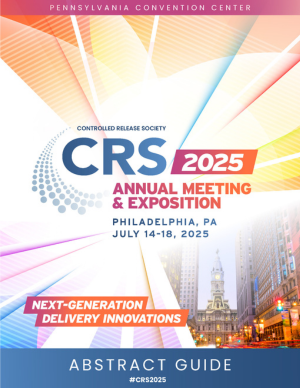Ocular Delivery (Focus Group - OcD)
(436) Muco-penetrating nanoparticles to sustain drug release for ophthalmic drug delivery
Introduction: The gold standard for posterior drug delivery is via intravitreal injection, though prone to complications like endophthalmitis and retinal hemorrhage.[1] Eye drops, while easy to administer, are ineffective in posterior segment treatment due to physiological and anatomical constraints.[2] A tocopherol polyethylene glycol (PEG; 1kDa) succinate (TPGS)-coated nanoparticle (NP) offers a less invasive approach for posterior drug delivery. Coated with low molecular weight PEG, a permeation enhancer,[3] the NP is expected to improve the mobility through the mucin layer and aid in corneal diffusion.
Learning Objectives:
- Understand the process of PEG-co-δ tocopherol synthesis and PEG-coated nanoparticles formation.
- Describe PEG-co-δ tocopherol's role in the nanoparticles’ ability in sustaining hydrophobic release.
Lindsay Sheardown – PhD student, McMaster University; Lina Liu – Research Engineer, McMaster University; Megan Reinsma – MASc Student, McMaster University; Heather Sheardown – Professor, Chemical Engineering, McMaster University

Nhi Tran, BSc (she/her/hers)
PhD student
McMaster University
Hamilton, Ontario, Canada

